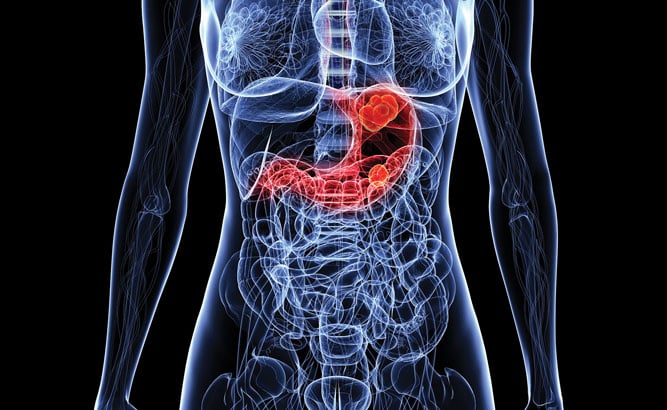 Dr Stephanie Fay is Science Programme Manager (Research Interpretation) at World Cancer Research Fund International, working on the Continuous Update Project.
Dr Stephanie Fay is Science Programme Manager (Research Interpretation) at World Cancer Research Fund International, working on the Continuous Update Project.
Our new Continuous Update Project review of the most up-to-date evidence on stomach cancer shows, for the first time, that there is strong evidence that eating processed meat increases the risk of non-cardia stomach cancer, and being overweight or obese increases the risk of cardia stomach cancer.
Cardia and non-cardia cancers
Stomach cancer is actually an umbrella term encompassing lots of different stomach cancer subtypes. The two main types are classified according to the part of the stomach where the tumour first develops.
The cardia region is the top of the stomach, where it joins the oesophagus or food pipe – named as it’s closest to the heart. Cancer developing here is called cardia stomach cancer.
The non-cardia region is the main area of the stomach, so non-cardia stomach cancer means a tumour in the main part of the stomach.
Are these subtypes new?
Science is advancing all the time and more research has been published on stomach cancers since our last report in 2007. Newer studies with more specialised techniques can now add information on precisely where tumours are diagnosed.
With more studies available to review, it is easier to show an association more clearly, and to see more specific effects of diet on cancer risk.
Sometimes we see effects on one cancer subtype but not another. For example, being overweight increases the risk of cardia stomach cancer, but there is no association with non-cardia cancer. If we only look at overall stomach cancers, this specific link is hidden in the data. New studies mean that subtype-specific analyses can uncover this evidence.
Risk factors for stomach cancers
The main part of the stomach (non-cardia region) holds food for up to five hours during digestion so the stomach lining is exposed to carcinogens present in some foods.
For example, preservatives added to processed meat such as nitrates and nitrates can react with the meat during digestion to form carcinogenic N-nitrosamines. These damage the stomach lining and cause lesions, which can lead to cancer. High levels of salt in processed meat can also cause harm.
Cardia stomach cancer is thought to be mainly caused by damage to cells at the top of the stomach from chronic gastro-oesophageal acid reflux. This is linked to overweight and obesity.
Cancer subtypes
Lots of cancers are divided into subtypes. We’re seeing more precise evidence emerging as our scientific knowledge progresses.
For example, subtypes of oesophageal cancer are differentiated according to the cells in the oesophagus that are affected by cancer: squamous cell carcinoma is cancer that has formed in the lining of the oesophagus, and adenocarcinoma is cancer that has formed in the glands there. There are different dietary risk factors for each subtype.
Knowing the differences in the causes and characteristics of the types of stomach cancers can help us more clearly understand the cancer process. This in turn will help us target the most relevant risk factors for effective cancer prevention.
> Our 1 minute video features all of our 10 Cancer Prevention Recommendations
